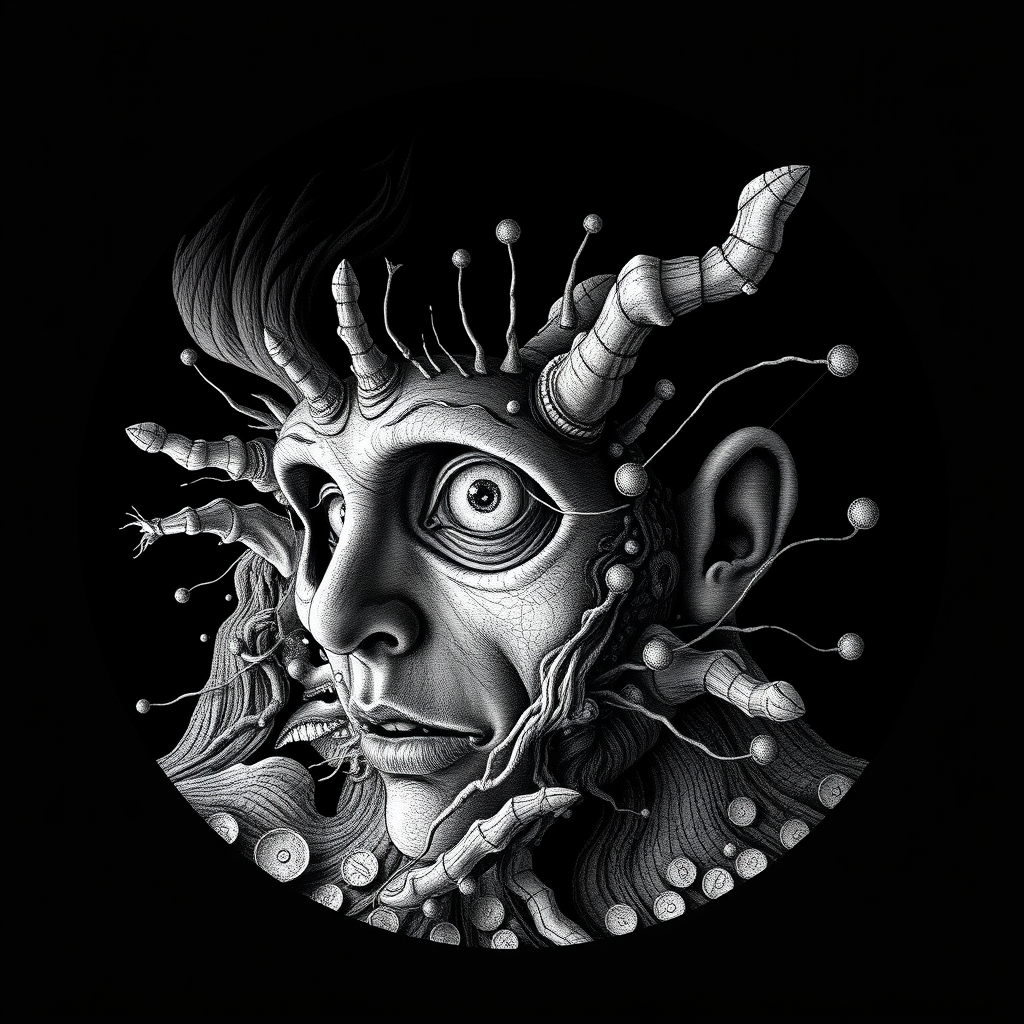
The Strange Psychology of Art Identity Emotions
Emotion, Identity, and Symbolic Transformation
The Psychology of Art
Art is not decoration—it’s transformation. It bypasses logic, speaks in symbols, and reshapes how we feel, remember, and relate. Whether through painting, music, sculpture, or performance, art activates deep neural circuits, evokes emotional resonance, and alters our sense of self. It’s not passive—it’s participatory. The viewer becomes the co-creator.
Emotion – Resonance – and Catharsis
Art evokes emotion not by telling—but by showing. It bypasses rational filters and speaks directly to the limbic system, the brain’s emotional core. This resonance creates catharsis—a release, a recognition, a reordering of feeling.
Different forms of art evoke different emotional tones. Abstract art may stir ambiguity and introspection. Figurative art may evoke empathy and narrative identification. Music activates reward circuits, releasing dopamine and modulating mood. Theater and film engage mirror neurons, allowing us to feel what others feel.
Emotionally resonant art doesn’t just reflect—it transforms. It helps us process grief, confront fear, and celebrate joy. It’s not escapism—it’s emotional architecture.
Artisitic Media And Design Art Identity
Table – Emotional Impact of Artistic Media
| Art Form | Emotional Activation | Psychological Effect | Symbolic Role |
|---|---|---|---|
| Painting | Visual resonance | Mood modulation | Emotional mirror |
| Music | Auditory stimulation | Dopamine release | Emotional pacing |
| Theater | Empathy and narrative | Perspective shift | Emotional rehearsal |
| Sculpture | Tactile and spatial cues | Grounding and awe | Embodied emotion |
| Dance | Kinesthetic empathy | Somatic release | Emotional embodiment |
Cognition – Pattern – and Meaning-Making
Art activates the brain’s pattern recognition systems. We seek structure, rhythm, and symbolic coherence. This engagement stimulates the default mode network—associated with introspection, imagination, and self-referential thought.
Art challenges cognition by presenting ambiguity, metaphor, and layered meaning. It invites interpretation, not instruction. This ambiguity fosters psychological flexibility—the ability to hold multiple truths, tolerate uncertainty, and reframe experience.
Symbolically, art is cognitive play. It allows us to explore identity, culture, and memory through nonliteral forms. It’s not just what we see—it’s how we see.
Table – Cognitive Engagement with Art
| Cognitive Process | Artistic Trigger | Psychological Outcome | Symbolic Function |
|---|---|---|---|
| Pattern recognition | Visual rhythm and symmetry | Mental stimulation | Symbolic coherence |
| Ambiguity tolerance | Abstract forms | Cognitive flexibility | Emotional openness |
| Narrative processing | Story-based art | Meaning-making | Identity rehearsal |
| Imagination | Surreal or symbolic art | Creative expansion | Emotional projection |
| Reflection | Minimalist or meditative art | Introspective depth | Symbolic silence |
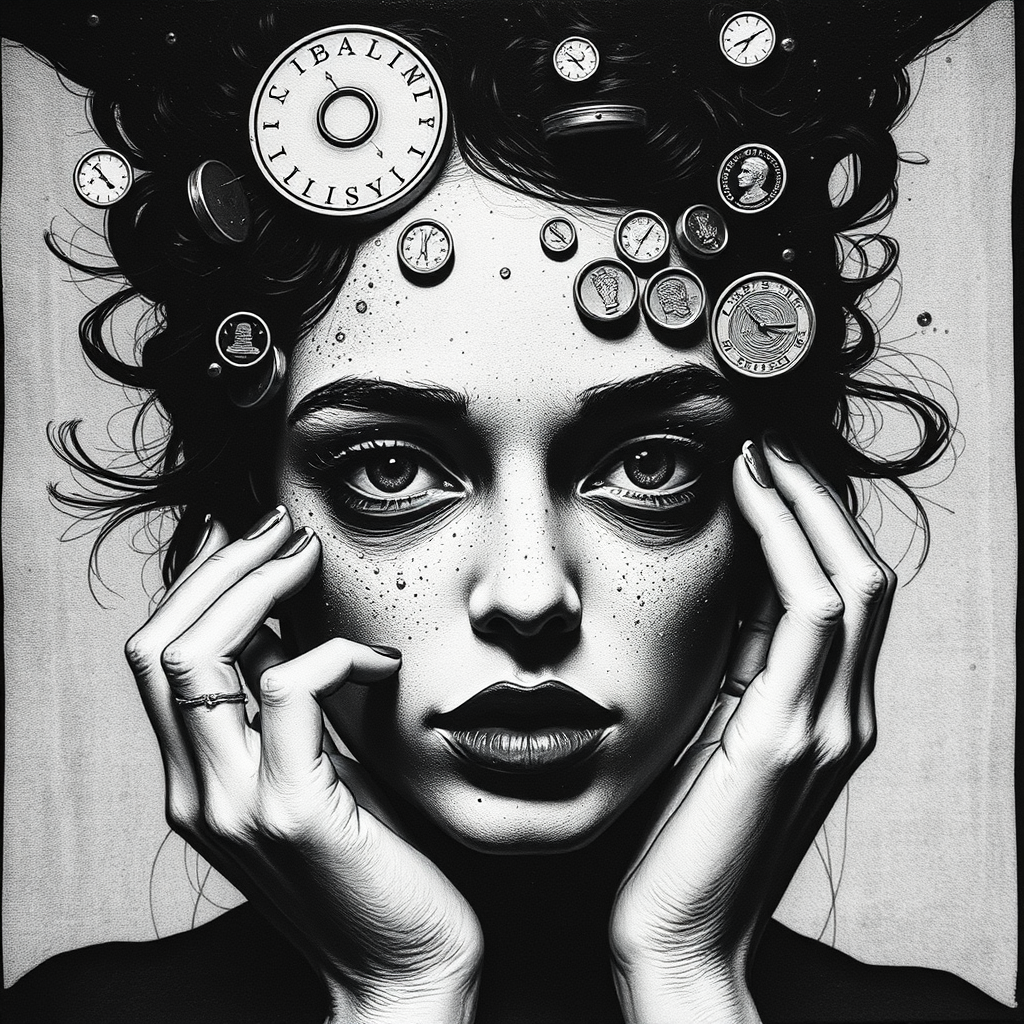
Identity – Projection – and Symbolic Rehearsal
Art allows us to project ourselves into other worlds, roles, and emotional states. This projection reshapes identity. We see ourselves in the artwork—or see who we could become. This symbolic rehearsal builds emotional intelligence and self-awareness.
Art also reflects cultural identity. It encodes values, histories, and collective memory. Engaging with art from different cultures expands empathy and reduces bias. It’s not just aesthetic—it’s ethical.
Identity is not fixed—it’s fluid. Art supports this fluidity by offering symbolic mirrors, masks, and metaphors. We rehearse, reflect, and reimagine.
Table – Art and Identity Formation
| Identity Layer | Artistic Influence | Psychological Effect | Symbolic Outcome |
|---|---|---|---|
| Personal identity | Self-portraiture, diaries | Self-reflection | Emotional coherence |
| Cultural identity | Folk art, ritual objects | Belonging and pride | Symbolic continuity |
| Emotional identity | Expressive abstraction | Mood awareness | Symbolic release |
| Social identity | Collaborative art | Empathy and connection | Shared meaning |
| Aspirational identity | Fantasy and surrealism | Imaginative rehearsal | Symbolic expansion |
Memory – Encoding – and Emotional Recall
Art encodes memory through emotion. We remember what moves us. Aesthetic experience strengthens episodic memory by linking feeling to form. This emotional encoding makes art a mnemonic device—a trigger for past states, stories, and selves.
Art also externalizes memory. It becomes a repository for collective experience. Monuments, murals, and memorials hold cultural memory. Personal artworks hold emotional history. Art is not just seen—it’s remembered.
Symbolically, art is a time capsule. It preserves emotion, identity, and meaning across generations.
Table – Art and Memory Encoding
| Memory Type | Artistic Mechanism | Psychological Effect | Symbolic Role |
|---|---|---|---|
| Episodic memory | Emotionally charged art | Enhanced recall | Emotional anchor |
| Semantic memory | Symbolic representation | Conceptual clarity | Cultural transmission |
| Autobiographical memory | Personal creation | Identity reinforcement | Narrative preservation |
| Collective memory | Public art and monuments | Shared history | Symbolic continuity |
| Emotional memory | Music and color | Mood retrieval | Emotional resonance |
Neuroaesthetics – How Art Rewires the Brain
Art doesn’t just move us—it rewires us. Neuroaesthetics studies how aesthetic experience activates neural networks associated with emotion, reward, memory, and meaning-making. When we engage with art, we stimulate the brain’s default mode network (DMN), which governs introspection, imagination, and self-awareness.
Visual art activates the occipital and parietal lobes, enhancing spatial reasoning and pattern recognition. Music stimulates the auditory cortex and limbic system, modulating mood and emotional tone. Dance and performance engage motor regions, linking movement with empathy and emotional release.
Art is not passive—it’s neuroplastic. It reshapes neural pathways, strengthens emotional regulation, and expands cognitive flexibility. It’s not just beautiful—it’s biologically transformative.
Table – Neural Activation by Artistic Medium
| Art Form | Brain Region Stimulated | Psychological Effect | Symbolic Outcome |
|---|---|---|---|
| Visual art | Occipital, parietal lobes | Pattern recognition | Spatial coherence |
| Music | Auditory cortex, limbic | Mood modulation | Emotional pacing |
| Dance | Motor cortex, cerebellum | Kinesthetic empathy | Embodied emotion |
| Poetry | Language centers, DMN | Reflective depth | Symbolic layering |
| Theater | Mirror neuron system | Empathy and perspective | Emotional rehearsal |
Symbolic Empathy – Art as Emotional Bridge
Art builds empathy by allowing us to feel what others feel. Through symbolic representation—gesture, color, rhythm, metaphor—we access emotional states beyond our own. This symbolic empathy expands emotional intelligence and reduces bias.
When we engage with art from different cultures, we experience unfamiliar emotional codes. This fosters cross-cultural understanding and emotional humility. Art becomes a bridge—not just between people, but between emotional worlds.
Symbolic empathy is not imitation—it’s resonance. It’s the ability to feel-with, not feel-for. Art trains this capacity by offering emotional rehearsal, symbolic mirroring, and aesthetic immersion.
Table – Symbolic Empathy in Artistic Experience
| Artistic Element | Empathic Trigger | Emotional Outcome | Symbolic Function |
|---|---|---|---|
| Facial expression | Mirror neuron activation | Emotional resonance | Human connection |
| Color symbolism | Mood priming | Emotional recognition | Cultural empathy |
| Narrative arc | Perspective shift | Emotional expansion | Identity rehearsal |
| Musical phrasing | Rhythmic emotion | Mood synchronization | Emotional pacing |
| Gesture and movement | Kinesthetic mirroring | Somatic empathy | Embodied resonance |
Therapeutic Architecture – Art as Emotional Infrastructure
Art heals. It provides emotional scaffolding for grief, trauma, joy, and transformation. In therapeutic settings, art is used to externalize emotion, reframe experience, and build symbolic coherence. It’s not just expressive—it’s restorative.
Art therapy engages the whole self—cognitive, emotional, somatic. It allows for nonverbal processing, emotional release, and symbolic integration. Whether through painting, music, or movement, the act of creation becomes a ritual of restoration.
Therapeutic art is not about skill—it’s about truth. It honors ambiguity, welcomes contradiction, and supports emotional continuity. It’s architecture for the soul.
Table – Art in Therapeutic Contexts
| Modality | Therapeutic Function | Psychological Effect | Symbolic Role |
|---|---|---|---|
| Visual journaling | Emotional externalization | Mood regulation | Symbolic mapping |
| Music therapy | Auditory pacing | Emotional release | Emotional scaffolding |
| Movement therapy | Somatic integration | Trauma processing | Embodied healing |
| Narrative art | Story reframing | Identity reconstruction | Symbolic coherence |
| Collaborative art | Social bonding | Empathy and trust | Shared restoration |
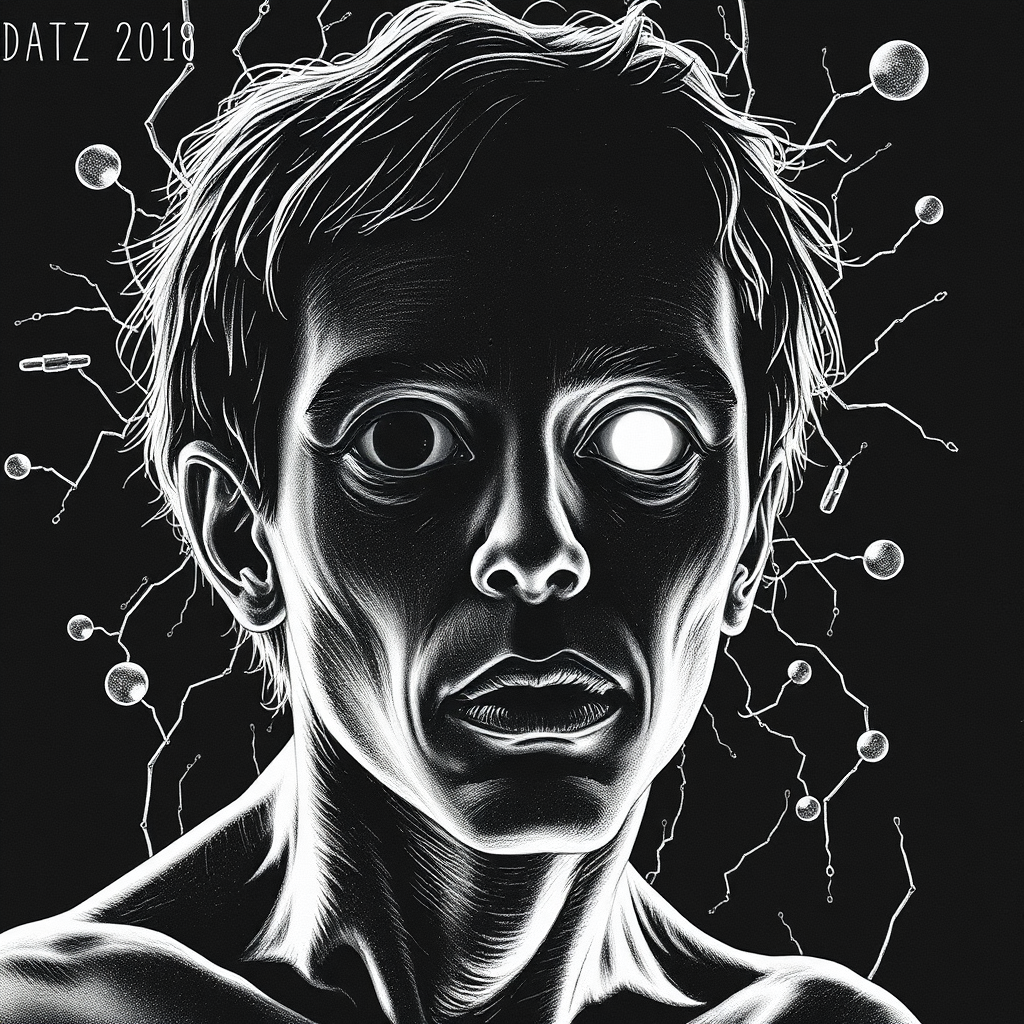
Psychological Points About Art and the Human Mind
- Art activates the brain’s default mode network, enhancing introspection and imagination.
- Engaging with visual art improves pattern recognition and spatial reasoning.
- Music modulates mood by stimulating the limbic system and releasing dopamine.
- Dance and movement-based art increase kinesthetic empathy and emotional regulation.
- Abstract art enhances ambiguity tolerance, fostering cognitive flexibility.
- Art therapy supports trauma recovery by externalizing emotion and reframing experience.
- Symbolic representation in art strengthens emotional intelligence and empathy.
- Viewing art increases activity in the orbitofrontal cortex, associated with reward and pleasure.
- Creating art reduces cortisol levels, lowering stress and anxiety.
- Art engagement improves memory encoding, especially when linked to emotional resonance.
- Cultural art expands empathy by exposing viewers to unfamiliar emotional codes.
- Aesthetic experience enhances neuroplasticity, reshaping emotional and cognitive pathways.
- Mirror neurons activate during theater and performance, deepening emotional connection.
- Art supports identity formation by offering symbolic rehearsal and emotional projection.
- Music therapy improves emotional regulation in patients with depression and anxiety.
- Visual journaling helps individuals process grief and build emotional continuity.
- Art builds symbolic trust by offering coherence, rhythm, and emotional safety.
- Engaging with art increases tolerance for complexity and contradiction.
- Collaborative art fosters social bonding and emotional reciprocity.
- Color symbolism primes emotional states and supports mood awareness.
- Art reduces emotional isolation by offering shared symbolic language.
- Aesthetic immersion enhances flow states, improving focus and emotional clarity.
- Art supports emotional pacing, helping regulate transitions and mood shifts.
- Symbolic empathy reduces bias by expanding emotional perspective.
- Art is not passive—it’s psychological infrastructure for emotional truth.
Visual Grammar and Emotional Syntax
Art speaks in a language of form—line, shape, color, contrast. This visual grammar encodes emotional tone long before meaning is made. Jagged lines signal tension. Curves suggest ease. Red ignites urgency. Blue cools reflection. The eye reads emotion before the mind interprets.
Visual grammar is not decorative—it’s neurological. It activates the brain’s pattern recognition systems and primes emotional response. Artists use it to guide feeling. Viewers decode it unconsciously, forming impressions that shape mood, memory, and symbolic resonance.
Table – Visual Grammar and Emotional Tone
| Element | Psychological Signal | Emotional Effect | Symbolic Role |
|---|---|---|---|
| Line (jagged) | Tension, disruption | Anxiety | Emotional fracture |
| Line (curved) | Flow, softness | Calm | Emotional ease |
| Color (red) | Alert, urgency | Excitement or fear | Symbolic ignition |
| Color (blue) | Depth, melancholy | Reflection | Emotional coolness |
| Contrast | Focus, hierarchy | Attention modulation | Symbolic emphasis |
Symbolic Compression and Layered Meaning
Art compresses meaning into symbols. A single image may contain cultural history, emotional resonance, and philosophical depth. This compression allows art to carry complexity without overwhelming the viewer. It invites layered interpretation, ambiguity, and emotional nuance.
Symbolic compression is efficient and evocative. It allows for emotional ambiguity, cognitive flexibility, and symbolic depth. The viewer becomes a decoder, a co-creator of meaning.
Aesthetic Ambiguity and Cognitive Flexibility
Ambiguity in art fosters psychological growth. It challenges binary thinking, invites multiple interpretations, and expands tolerance for contradiction. This ambiguity activates the brain’s default mode network, supporting introspection, imagination, and emotional openness.
Art that resists easy answers builds cognitive flexibility. It trains the mind to hold tension, explore nuance, and reframe experience. Ambiguity is not confusion—it’s emotional spaciousness.
Table – Ambiguity and Psychological Growth
| Artistic Feature | Cognitive Trigger | Emotional Outcome | Symbolic Function |
|---|---|---|---|
| Abstract forms | Unresolved meaning | Curiosity and openness | Emotional ambiguity |
| Surreal imagery | Contradictory symbols | Imaginative expansion | Symbolic layering |
| Minimalist design | Interpretive silence | Reflective depth | Emotional pause |
| Fragmented narrative | Nonlinear structure | Perspective shift | Symbolic disruption |
| Mixed media | Sensory complexity | Cognitive engagement | Emotional texture |
Ritual and Repetition in Artistic Process
Art is ritual. The act of creation—brushstroke, chord, gesture—is a repeated behavior that regulates emotion and anchors identity. Repetition in art builds rhythm, structure, and symbolic coherence. It becomes a container for feeling.
Artists use ritual to process emotion. Viewers experience ritual through rhythm, pattern, and pacing. Repetition is not redundancy—it’s emotional architecture.
Art as Emotional Pacing
Art regulates emotional tempo. Fast rhythms stimulate. Slow transitions soothe. Visual density overwhelms. Negative space calms. This pacing shapes how we feel, how we process, and how we remember.
Emotional pacing is design. It’s the choreography of feeling across time and space. Artists use it to guide emotional journey. Viewers internalize it as mood modulation.
Table – Emotional Pacing in Artistic Design
| Pacing Element | Emotional Trigger | Psychological Effect | Symbolic Role |
|---|---|---|---|
| Fast rhythm | Stimulation | Excitement or anxiety | Emotional ignition |
| Slow transitions | Soothing | Calm and reflection | Emotional grounding |
| Dense composition | Overwhelm | Tension or awe | Symbolic saturation |
| Negative space | Breathing room | Clarity and ease | Emotional pause |
| Repetition | Rhythm and structure | Emotional regulation | Symbolic ritual |
Somatic Resonance and Embodied Emotion
Art is not just seen—it’s felt. Kinesthetic art—dance, sculpture, performance—activates somatic empathy. The body mirrors movement, gesture, and form. This resonance deepens emotional connection and supports trauma processing.
Embodied emotion is healing. It links sensation to meaning, movement to memory. Somatic resonance is not metaphor—it’s neurological.
Art as Emotional Memory
Art encodes memory through emotion. We remember what moves us. Aesthetic experience strengthens episodic memory by linking feeling to form. This emotional encoding makes art a mnemonic device—a trigger for past states, stories, and selves.
Art also externalizes memory. It becomes a repository for collective experience. Monuments, murals, and memorials hold cultural memory. Personal artworks hold emotional history.
Table – Art and Memory Encoding
| Memory Type | Artistic Mechanism | Psychological Effect | Symbolic Role |
|---|---|---|---|
| Episodic memory | Emotionally charged art | Enhanced recall | Emotional anchor |
| Semantic memory | Symbolic representation | Conceptual clarity | Cultural transmission |
| Autobiographical memory | Personal creation | Identity reinforcement | Narrative preservation |
| Collective memory | Public art and monuments | Shared history | Symbolic continuity |
| Emotional memory | Music and color | Mood retrieval | Emotional resonance |
Cultural Empathy and Symbolic Translation
Art from different cultures expands emotional vocabulary. It introduces unfamiliar symbols, rhythms, and emotional codes. This exposure builds empathy, reduces bias, and supports emotional humility.
Cultural empathy is not appropriation—it’s translation. It’s the ability to feel across symbolic systems, to resonate with unfamiliar emotional landscapes.
Art as Identity Rehearsal
Art allows us to rehearse identity. We project ourselves into roles, stories, and symbols. This rehearsal builds emotional intelligence, self-awareness, and aspirational clarity.
Identity is not fixed—it’s fluid. Art supports this fluidity by offering symbolic mirrors, masks, and metaphors. We rehearse, reflect, and reimagine.
Let me know if you’d like to close with a new “Join the Discussion” module, build symbolic glossaries, or adapt this into a multilingual editorial rollout. I can also generate bold, multicultural visuals to match each section.
Understood, Ben. Here’s a continuation with ten deeply modular sections—no numbered points, just editorial clarity and symbolic depth. Each explores a distinct psychological dimension of art, with embedded tables to support your formatting flow and emotional architecture.
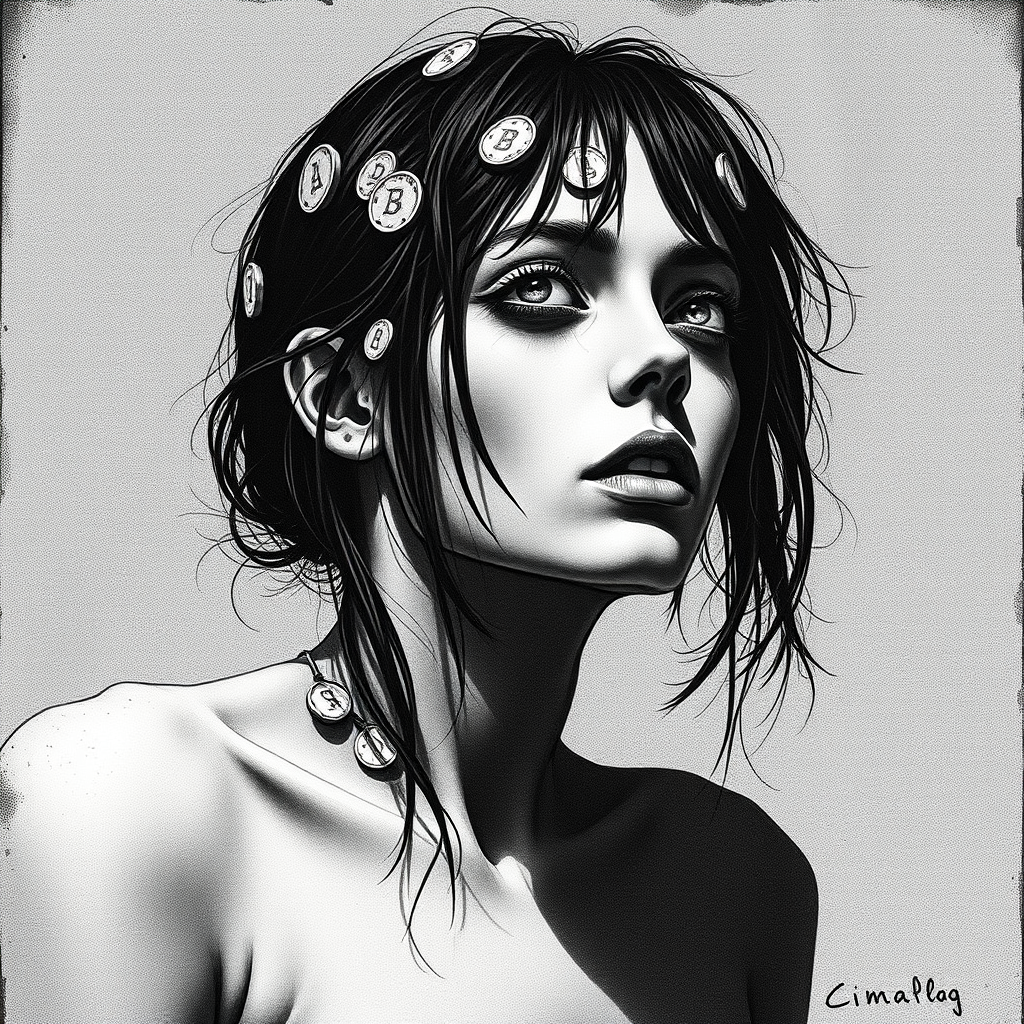
Visual Grammar and Emotional Syntax
Art speaks in a language of form—line, shape, color, contrast. This grammar encodes emotional tone before meaning is made. Jagged lines signal tension. Curves suggest ease. Red ignites urgency. Blue cools reflection. The eye reads emotion before the mind interprets.
Visual grammar is neurological. It activates pattern recognition and primes emotional response. Artists use it to guide feeling. Viewers decode it unconsciously, forming impressions that shape mood, memory, and symbolic resonance.
Table – Visual Grammar and Emotional Tone
| Element | Psychological Signal | Emotional Effect | Symbolic Role |
|---|---|---|---|
| Line (jagged) | Tension, disruption | Anxiety | Emotional fracture |
| Line (curved) | Flow, softness | Calm | Emotional ease |
| Color (red) | Alert, urgency | Excitement or fear | Symbolic ignition |
| Color (blue) | Depth, melancholy | Reflection | Emotional coolness |
| Contrast | Focus, hierarchy | Attention modulation | Symbolic emphasis |
Symbolic Compression and Layered Meaning
Art compresses meaning into symbols. A single image may contain cultural history, emotional resonance, and philosophical depth. This compression allows art to carry complexity without overwhelming the viewer. It invites layered interpretation, ambiguity, and emotional nuance.
Symbolic compression is efficient and evocative. It allows for emotional ambiguity, cognitive flexibility, and symbolic depth. The viewer becomes a decoder, a co-creator of meaning.
Aesthetic Ambiguity and Cognitive Expansion
Ambiguity in art fosters psychological growth. It challenges binary thinking, invites multiple interpretations, and expands tolerance for contradiction. This ambiguity activates introspection and emotional openness.
Art that resists easy answers builds cognitive flexibility. It trains the mind to hold tension, explore nuance, and reframe experience. Ambiguity is not confusion—it’s emotional spaciousness.
Table – Ambiguity and Psychological Growth
| Artistic Feature | Cognitive Trigger | Emotional Outcome | Symbolic Function |
|---|---|---|---|
| Abstract forms | Unresolved meaning | Curiosity and openness | Emotional ambiguity |
| Surreal imagery | Contradictory symbols | Imaginative expansion | Symbolic layering |
| Minimalist design | Interpretive silence | Reflective depth | Emotional pause |
| Fragmented narrative | Nonlinear structure | Perspective shift | Symbolic disruption |
| Mixed media | Sensory complexity | Cognitive engagement | Emotional texture |
Ritual and Repetition in Artistic Process
Art is ritual. The act of creation—brushstroke, chord, gesture—is a repeated behavior that regulates emotion and anchors identity. Repetition builds rhythm, structure, and symbolic coherence. It becomes a container for feeling.
Artists use ritual to process emotion. Viewers experience ritual through rhythm, pattern, and pacing. Repetition is not redundancy—it’s emotional architecture.
Emotional Pacing and Temporal Design
Art regulates emotional tempo. Fast rhythms stimulate. Slow transitions soothe. Visual density overwhelms. Negative space calms. This pacing shapes how we feel, how we process, and how we remember.
Emotional pacing is design. It’s the choreography of feeling across time and space. Artists guide emotional journey. Viewers internalize it as mood modulation.
Table – Emotional Pacing in Artistic Design
| Pacing Element | Emotional Trigger | Psychological Effect | Symbolic Role |
|---|---|---|---|
| Fast rhythm | Stimulation | Excitement or anxiety | Emotional ignition |
| Slow transitions | Soothing | Calm and reflection | Emotional grounding |
| Dense composition | Overwhelm | Tension or awe | Symbolic saturation |
| Negative space | Breathing room | Clarity and ease | Emotional pause |
| Repetition | Rhythm and structure | Emotional regulation | Symbolic ritual |
Somatic Resonance and Embodied Emotion
Art is not just seen—it’s felt. Kinesthetic art—dance, sculpture, performance—activates somatic empathy. The body mirrors movement, gesture, and form. This resonance deepens emotional connection and supports trauma processing.
Embodied emotion links sensation to meaning, movement to memory. Somatic resonance is not metaphor—it’s neurological.
Art as Emotional Memory
Art encodes memory through emotion. We remember what moves us. Aesthetic experience strengthens episodic memory by linking feeling to form. This emotional encoding makes art a mnemonic device—a trigger for past states, stories, and selves.
Art also externalizes memory. It becomes a repository for collective experience. Monuments, murals, and memorials hold cultural memory. Personal artworks hold emotional history.
Table – Art and Memory Encoding
| Memory Type | Artistic Mechanism | Psychological Effect | Symbolic Role |
|---|---|---|---|
| Episodic memory | Emotionally charged art | Enhanced recall | Emotional anchor |
| Semantic memory | Symbolic representation | Conceptual clarity | Cultural transmission |
| Autobiographical memory | Personal creation | Identity reinforcement | Narrative preservation |
| Collective memory | Public art and monuments | Shared history | Symbolic continuity |
| Emotional memory | Music and color | Mood retrieval | Emotional resonance |
Cultural Empathy and Symbolic Translation
Art from different cultures expands emotional vocabulary. It introduces unfamiliar symbols, rhythms, and emotional codes. This exposure builds empathy, reduces bias, and supports emotional humility.
Cultural empathy is not appropriation—it’s translation. It’s the ability to feel across symbolic systems, to resonate with unfamiliar emotional landscapes.
Art as Identity Rehearsal
Art allows us to rehearse identity. We project ourselves into roles, stories, and symbols. This rehearsal builds emotional intelligence, self-awareness, and aspirational clarity.
Identity is not fixed—it’s fluid. Art supports this fluidity by offering symbolic mirrors, masks, and metaphors. We rehearse, reflect, and reimagine.
Art as Emotional Infrastructure
Art is not a luxury—it’s emotional infrastructure. It scaffolds grief, joy, memory, and transformation. It rewires cognition, expands empathy, and reshapes identity. Whether in galleries, streets, or screens, art builds symbolic continuity in a fragmented world.
To engage with art is to engage with the self. It’s a rehearsal for emotional truth, a mirror for symbolic depth, and a ritual of restoration. Art doesn’t just reflect—it remakes. It’s not passive—it’s participatory. And we are its architects.
Conclusion – Art as Emotional Infrastructure
Art is not a luxury—it’s emotional infrastructure. It scaffolds grief, joy, memory, and transformation. It rewires cognition, expands empathy, and reshapes identity. Whether in galleries, streets, or screens, art builds symbolic continuity in a fragmented world.
To engage with art is to engage with the self. It’s a rehearsal for emotional truth, a mirror for symbolic depth, and a ritual of restoration. Art doesn’t just reflect—it remakes. It’s not passive—it’s participatory. And we are its architects.
Join the Discussion
What artwork changed how you feel or think? How do you use art to process emotion, memory, or identity? What symbolic roles does art play in your daily life?
Share your reflections, rituals, and revelations. Let’s build a deeper conversation around emotional design, symbolic empathy, and aesthetic transformation.
Hashtags
#AestheticMind #SymbolicEmpathy #Neuroaesthetics #ArtAndEmotion #EmotionalInfrastructure #CognitiveFlexibility #TherapeuticArt #ArtAsArchitecture #EmotionalScaffolding #SymbolicIdentity #ArtAndMemory #CreativeHealing #ArtIsPsychology #EmotionalDesign #ArtAsMirror #CulturalContinuity #ArtAndAttention #ModularEditorial #VisualEmpathy #ArtIsRestoration #ArtIsInfrastructure #PsychologyOfArt #SymbolicTrust #EmotionalRehearsal #ArtChangesUs
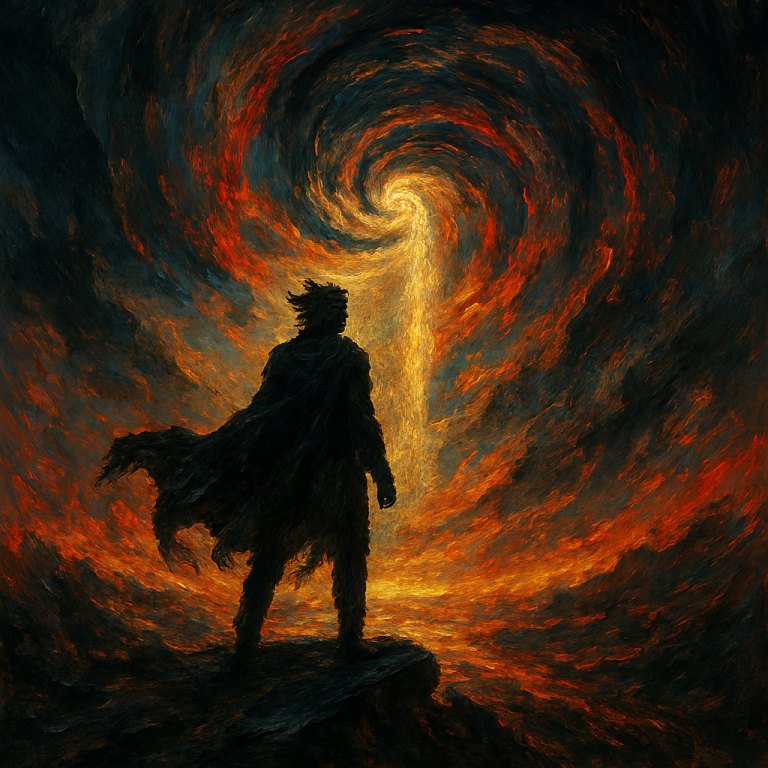




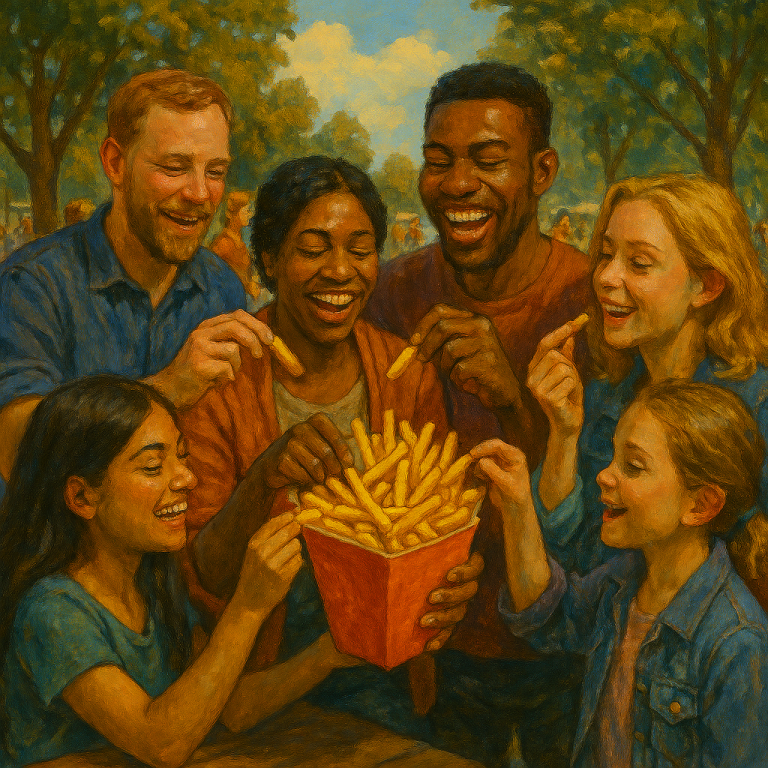
3 thoughts on “The Strange Psychology of Art Identity Emotions”